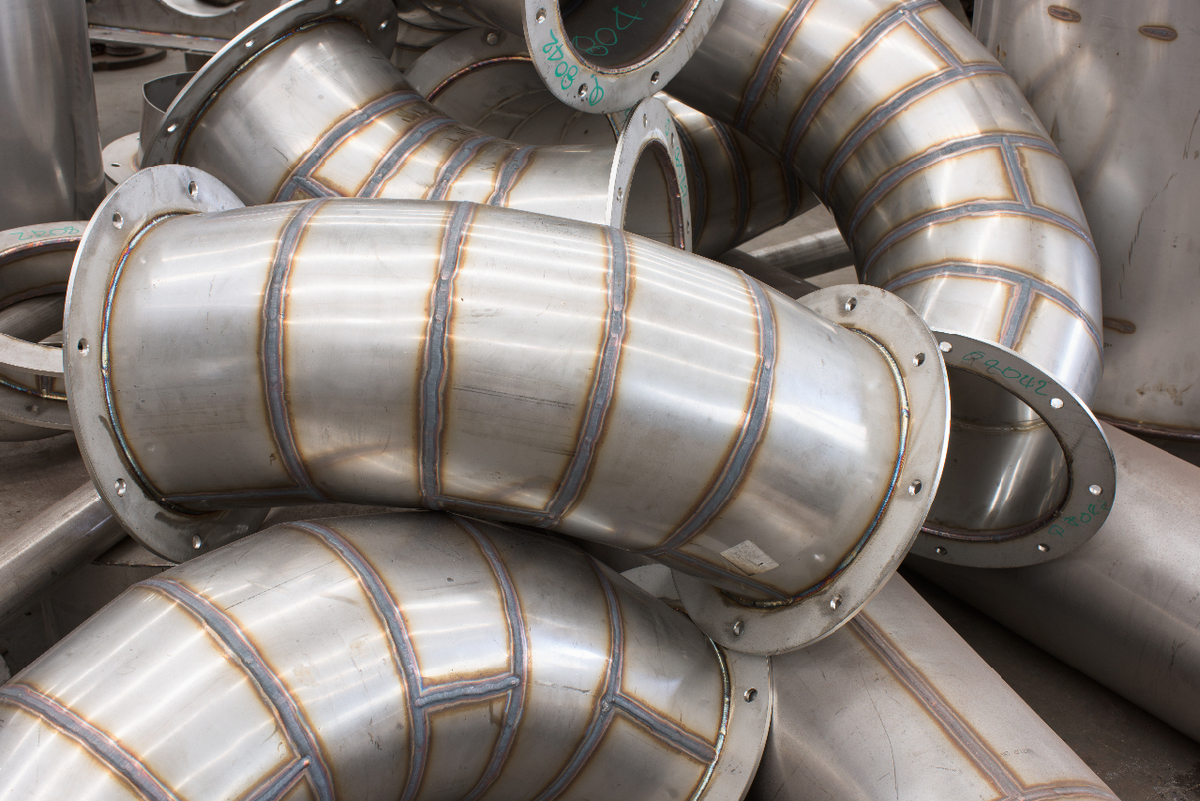
After a metal workpiece is punched, pressed, cut or formed, there are often flaws or remnants on the piece that does not meet quality requirements. These remnants include sharp points of metal (burrs), sharp edges along the radius of a component, and roughness on a component’s surface.
In mass production, it is cost and time-prohibitive to correct the flaws of each individual workpiece by hand. Instead, manufacturers use methods such as shot blasting, vibratory finishing, tumble finishing (barrel tumbling) and harperizing to remove the flaws from hundreds of parts en-mass. Mass finishing is a crucial part of the metal manufacturing process.
What is Mass Finishing?
Mass finishing is a term to describe an abrasive process that allows for bulk or mass of components to be economically processed in large quantities. Generally, the components are made of metal, but other substrates can be processed in this fashion as well.
In addition to deburring and edge breaking, mass finishing methods can be used for surface smoothing or polishing, removal of oil or contaminants, and descaling after heat treating.
Why Mass Finishing?
Almost all components need refinement before they can be assembled by workers or handled by the consumer. Mass finishing delivers a low-cost alternative to finishing components by hand.
Mass finishing also delivers a consistent result every time, whereas hand finishing is subject to the accuracy of the finisher labour intensive. In all cases where there is a large volume of components, mass finishing is a significantly lower cost than labour-intensive hand finishing.
The consistent result of mass finishing also helps products meet quality standards.
How Mass Finishing is Accomplished
Vibratory Finishing - The components are placed in a massive bowl that holds abrasive media and cleaning agents. In operation, the bowl vibrates at an exaggerated rate, causing the media to turn up and down while rotating in a circular motion. The components travel with the abrasive media. Over time, the combination of rotation and vibration smoothes the edge and surface of a component while removing burrs.
Tumble Finishing - The components are placed in a large barrel that also holds abrasive media and cleaning agents. The barrel rotates in a circular motion and the components and media roll together. This abrasive action is ideal for removing burrs, and the aggressive action of tumbling is well-suited to durable metal parts.
Harperizing - The components are placed in chambers holding media and cleaning agents, and the Harperizer creates a tumbling process that uses G forces to finish parts. Harperizing can clean and polish parts in a much shorter period than conventional tumbling and vibratory finishing. Because of the G forces produced, harperizing can reach areas conventional tumbling and vibratory finishing cannot reach.
Shot Blasting - The components are placed in a chamber, where small particles of metal are shot or blasted at the component’s surface. Shot blasting can be used to remove edges and smooth the surface of components. It is also an effective way to remove rust formation or chemicals left behind from the components forming process. Shot blasting is commonly used to create an even and consistent finish for components that have been diecast in steel or aluminum.
What is Finishing Media?
Media is the abrasive material used to clean and finish components. The composition of media may be ceramic, plastic or steel. The media itself comes in a variety of shapes to meet specific cleaning requirements. Common shapes are oval, triangle, star, pyramid and ellipse.
Learn More About Mass Finishing
Latem Industries has been in the mass metal finisher in Cambridge, Ontario since 1997. To discover more about the many advantages of mass finishing and receive a no charge quotation for your mass finishing requirements, contact us online or by phone at 1-866-543-3334.

